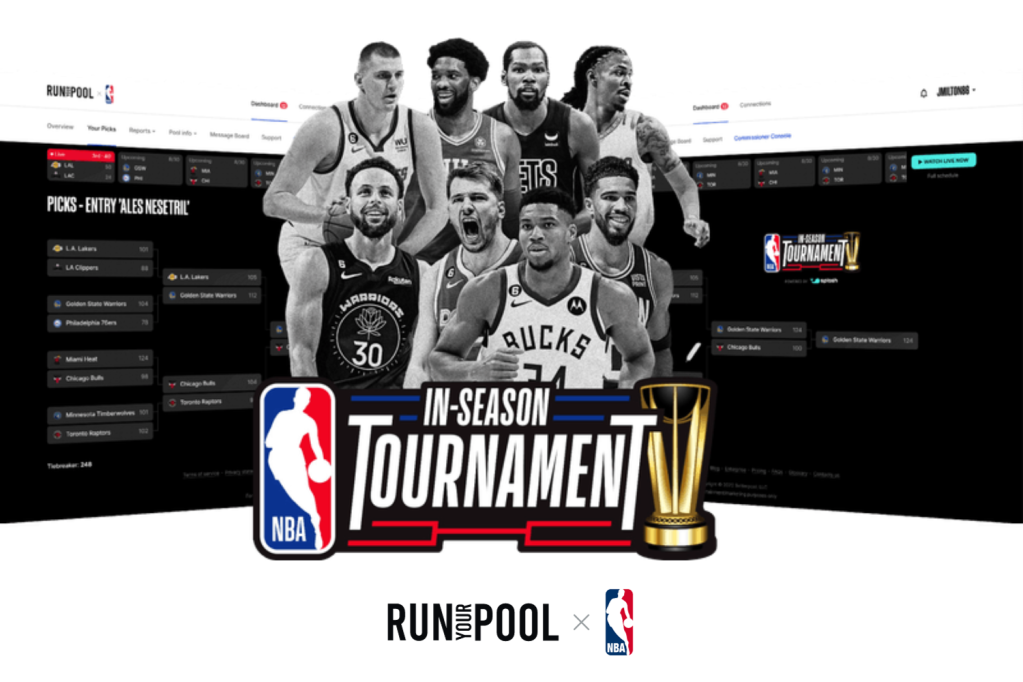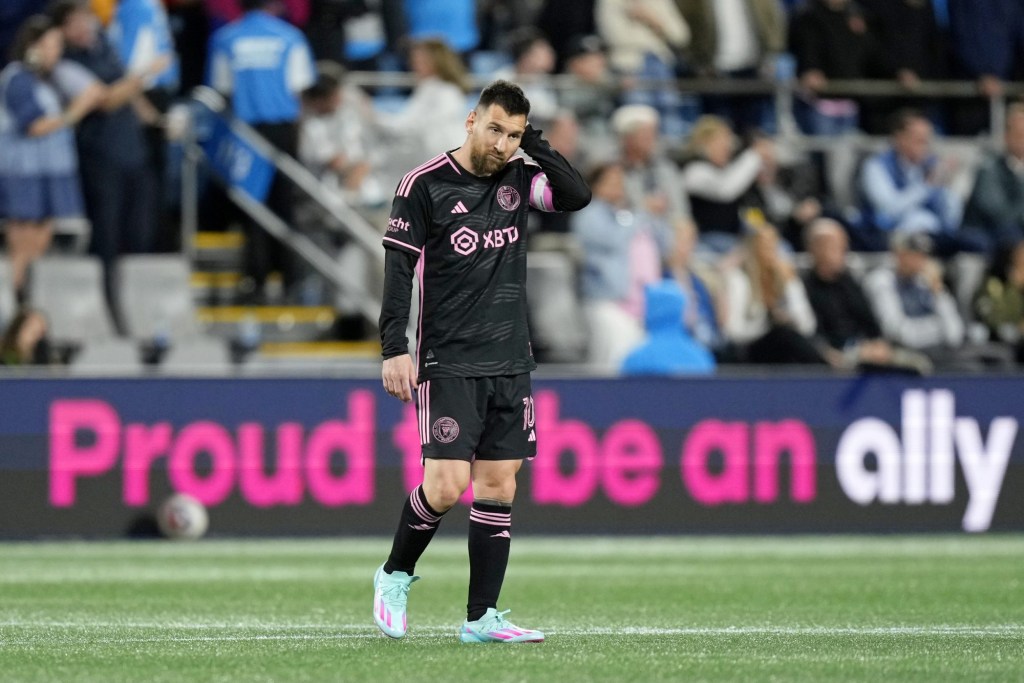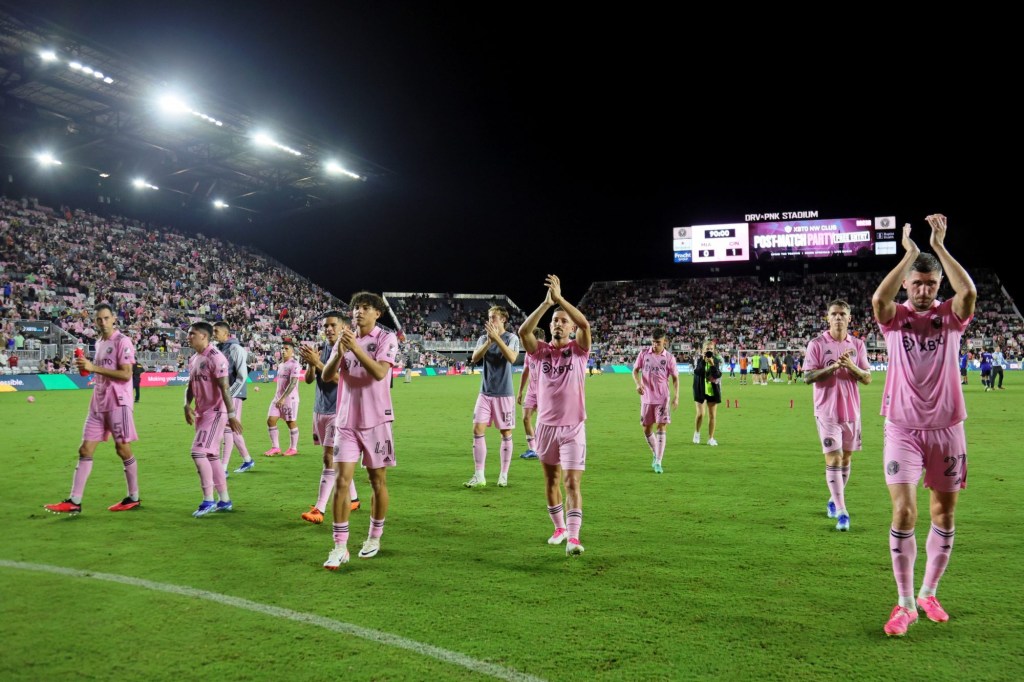The MLS Cup playoffs kicked off with a pair of first-round matches on Saturday after the New York Red Bulls and Sporting KC advanced out of the wild-card round on Wednesday. Eighteen of the league’s 29 teams qualified for the postseason — but not the one with the league’s biggest star.
Lionel Messi was able to help Inter Miami win the inaugural Leagues Cup, but he arrived too late to secure a playoff berth for a team with the league’s worst record when he signed. Still, Messi’s entry came nearly five months into what turned out to be a groundbreaking and record-setting season for American soccer.
In February, MLS began a 10-year, $2.5 billion exclusive media rights deal with Apple, then broke its single-season average attendance record with 22,111 fans per match. Total season attendance also set a new mark with 10,900,804 fans.
“We’ve worked really hard with our clubs on what the experience is like in stadiums — the types of rituals that they’re seeing, the experience someone has from start to finish,” MLS executive vice president Camilo Duranatold told Front Office Sports.
Attendance was buoyed by the addition of St. Louis City FC — which sold out all 17 home matches at its new 22,000-seat stadium. St. Louis earned the Western Conference’s top seed as it looks to become the first expansion team to win the MLS Cup since the Chicago Fire in 1998.
Upon Messi’s jaw-dropping arrival, some pundits wondered whether his success was ultimately bad for MLS’ growth. But while the league will look to prove its product is bigger than the Argentinian soccer legend over the next six weeks, his impact simply cannot be overstated.
Reshaping MLS Landscape
Messi unsurprisingly helped Inter Miami sell out every remaining home match, saw a major uptick in followers — 11.7 million in total and nearly 10 million on Instagram alone — and has the club expecting huge revenue increases next year. But other clubs have felt the Messi effect, too.
With Inter Miami out of playoff contention, Messi suited up for the club’s final match at Charlotte FC, which drew 66,000 fans — almost double the latter club’s average attendance up to that point and a league-wide trend.
Miami had 10 away matches after Messi signed, but he didn’t play in all of them. Some of his opponents, like the New York Red Bulls, saw record gate revenues after preparing for a potential Messi match before he even joined the league.
Others, like Atlanta United, drew huge crowds despite Messi being unable to play due to injury. Atlanta had more than 74,000 in attendance for its Miami match — and still feels like it capitalized on the opportunity. “A lot of those people that came in for that match, that was their first time ever attending a match at Mercedes-Benz Stadium,” the club’s vice president of business operations Georgia O’Donoghue told FOS.
Making The Most Of Messi
Now, the focus is to use Messi’s spotlight to create long-term fans.
“He brings attention to those stars that we already have and we can build up on our own,” O’Donoghue said. And that strategy extends to the league as a whole.
Next year, Messi’s availability around international duties and Inter Miami’s travel itinerary is already on the mind of MLS decision-makers. “We’re looking very closely at how we’re scheduling Miami on broadcasts to make sure that we’re placing Miami in a slot that can benefit and migrate viewers to other matches,” said Durana, who oversees the league’s Apple partnership, properties, and events.
Inter Miami will visit 17 away markets. Some, like the Red Bulls, plan to explore moving their Miami match out of their soccer-specific venue to nearby MetLife Stadium to maximize attendance.
‘Huge Win For Apple’
While Messi has been credited with doubling Apple’s MLS Season Pass subscriber numbers, the product was said to be outperforming expectations before his arrival. “We’re certainly doing much better than we had forecasted,” Apple senior vice president of services Eddy Cue said in June before Messi decided to join MLS.
Subscriber numbers are closely guarded, but some context emerged throughout the season. Early in the year, a report suggested subscribers were close to a million. Another report found that Messi’s arrival drove nearly 300,000 subscribers in July.
Beyond the Messi boost, MLS is the first major U.S. league to complete a full season of an exclusive streaming deal that will certainly evolve throughout the next decade. “Everyone acknowledges that we’re still building the plane while we fly it,” FC Cincinnati co-CEO Jeff Berding told FOS. “And this has been a learning year.”
O’Donoghue said Apple performed better than she expected. “It was a huge win for Apple,” sports media consultant Jim Willians told FOS, citing majorly improved production quality.
A major change from previous seasons was the predictability of Wednesday and Saturday evening match slots — which O’Donoghue felt was good for viewers — as opposed to the dozens of broadcast windows used before Apple. Williams, who is CEO of LJC Media, disagrees. “If they’re growing the league, why would you not want to play some afternoon games and basically use that window of building an entire day on Saturday?”
Despite the consistency in the regular season — good or bad — the first round of playoffs departs from the Wednesday/Saturday sequence and features 12 games on various days of the week going head-to-head with NFL broadcasts.
But overall, viewers have been watching matches for longer periods of time on Apple, according to MLS, but average game viewership numbers are not public. “It’s been an adjustment for our fans,” added Berding, who says Cincinnati — the Eastern Conference’s top seed — hasn’t seen a drop in viewership after previously broadcasting its games on a free local, over-the-air station.
Changes to how Apple delivers its MLS content are expected for next season, and the league will retain its linear partnerships with Fox Sports in the U.S. and others in Canada to simulcast select games.
More Beyond Messi
In 2024, format changes to the Leagues Cup may be on the way, MLS tells FOS, as the joint tournament with Mexico’s Liga MX hits its second year.
Meanwhile, MLS will attempt to capitalize on a run of major international soccer tournaments played in the U.S. starting next summer with the Copa America. In 2025, the FIFA Club World Cup will be a precursor to the long-awaited 2026 FIFA World Cup in North America.
In 2025, San Diego FC will become the league’s 30th team, paying a record $500 million expansion fee. The league could look to expand even further with markets like Las Vegas, Sacramento, and Phoenix potentially interested in acquiring clubs.
“When you have the best player of all time making Major League Soccer his league of choice, I think it’s a real testament as to where MLS is and where it’s going in the years ahead,” commissioner Don Garber said earlier this year.
The collective valuation of MLS clubs is $15 billion, per Garber. “The league has significance,” he added. With a long-term media deal in place and North America the center of international soccer for the majority of this decade, there’s never been a better time to prove it.








